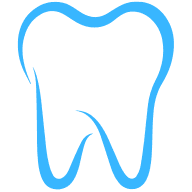Welcome to the world of preventive dentistry! This blog post aims to provide a comprehensive guide on various preventive dentistry techniques. We'll delve into the importance of these techniques, how they can help maintain oral health, and the role they play in preventing dental diseases. Let's embark on this journey to a healthier smile!
Understanding Preventive Dentistry
Preventive dentistry is the cornerstone of oral health. It encompasses a range of practices and procedures aimed at preventing the onset of dental diseases. The goal is to maintain healthy teeth and gums, thereby enhancing your overall health.
Regular dental check-ups form the basis of preventive dentistry. These visits allow your dentist to detect any potential issues early, making treatment more effective. Dental cleanings, also known as prophylaxis, are another crucial aspect. They help remove plaque and tartar build-up that regular brushing and flossing might miss.
Fluoride treatments also play a significant role in preventive dentistry. They strengthen the tooth enamel, making it more resistant to decay. Dental sealants, on the other hand, provide a protective shield over the chewing surfaces of the back teeth, preventing food particles and bacteria from causing cavities.
The Role of a Healthy Diet
A balanced diet is essential for good oral health. Consuming foods rich in calcium and phosphorus, such as dairy products and lean meats, can help strengthen your teeth. Fruits and vegetables, high in water and fiber, stimulate saliva production, which plays a crucial role in neutralizing acids and washing away food particles.
Limiting sugary and acidic foods is also important. These can erode the tooth enamel, leading to cavities and tooth sensitivity. Instead, opt for healthier alternatives like nuts, cheese, and unsweetened tea or coffee.
Remember, a healthy diet is not just about what you eat, but also when you eat. Frequent snacking can increase the risk of cavities, as it provides a constant supply of sugars for bacteria to feed on. Try to stick to regular meal times and opt for healthy snacks if needed.
The Importance of Proper Oral Hygiene
Proper oral hygiene is the first line of defense against dental diseases. Brushing twice a day with a fluoride toothpaste and flossing daily are the basics. However, it's not just about doing these tasks, but doing them correctly.
When brushing, make sure to reach all surfaces of your teeth, including the back teeth and along the gum line. Use a soft-bristled toothbrush and replace it every three to four months, or sooner if the bristles become frayed. Flossing, on the other hand, helps remove plaque and food particles from between your teeth and under the gum line, areas that your toothbrush can't reach.
Mouthwash can also be a useful addition to your oral hygiene routine. It can help kill bacteria, freshen breath, and in some cases, strengthen teeth. However, it should not replace brushing and flossing, but rather complement them.
The Impact of Lifestyle Choices
Lifestyle choices can significantly impact your oral health. Smoking, for instance, can stain your teeth, cause bad breath, and increase the risk of gum disease and oral cancer. Alcohol, on the other hand, can dry out your mouth and erode your tooth enamel, leading to cavities and tooth sensitivity.
Stress can also affect your oral health. It can lead to teeth grinding, also known as bruxism, which can wear down your teeth over time. Additionally, stress can lower your immune system, making you more susceptible to infections, including gum disease.
Regular exercise, a balanced diet, and good sleep hygiene can help manage stress levels and contribute to better oral health. It's also important to stay hydrated, as a dry mouth can increase the risk of cavities.
Regular Dental Check-ups and Cleanings
Regular dental check-ups and cleanings are a vital part of preventive dentistry. They allow your dentist to monitor your oral health and detect any potential issues early.
During a check-up, your dentist will examine your teeth, gums, and mouth for signs of disease. They may also take X-rays to check for issues below the surface, such as impacted teeth or bone loss. A professional cleaning, on the other hand, involves removing plaque and tartar build-up, followed by polishing your teeth to remove stains and smooth the tooth surface.
These visits also provide an opportunity for you to discuss any concerns or questions you may have about your oral health. Your dentist can provide advice on proper oral hygiene techniques, diet, and lifestyle choices to help maintain your oral health.
The Role of Dental Sealants and Fluoride Treatments
Dental sealants and fluoride treatments are additional preventive measures that can help protect your teeth.
Dental sealants are a thin, protective coating applied to the chewing surfaces of the back teeth. They fill in the grooves and depressions, preventing food particles and bacteria from getting trapped and causing cavities. Sealants are especially beneficial for children, who may not be as thorough in their brushing.
Fluoride treatments, on the other hand, involve applying a high concentration of fluoride to the teeth. This strengthens the tooth enamel, making it more resistant to decay. Fluoride treatments can benefit both children and adults, especially those at a higher risk of cavities.
Embracing Preventive Dentistry for a Healthier Smile
Preventive dentistry is all about taking proactive steps towards maintaining your oral health. By understanding and implementing these techniques, you can help prevent dental diseases and ensure a healthier smile. Remember, a healthy mouth contributes to a healthy body, so let's make preventive dentistry a priority!

